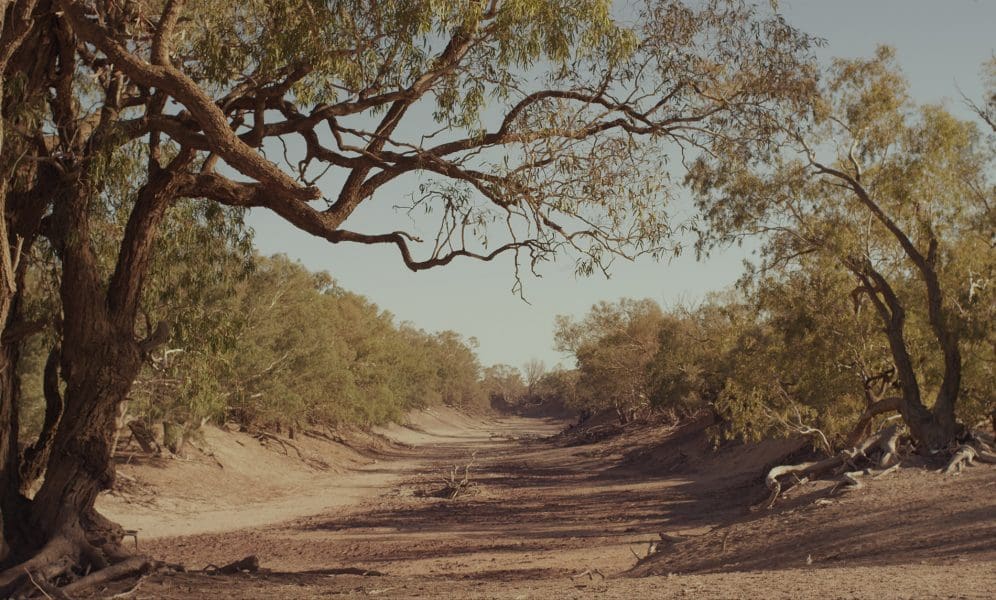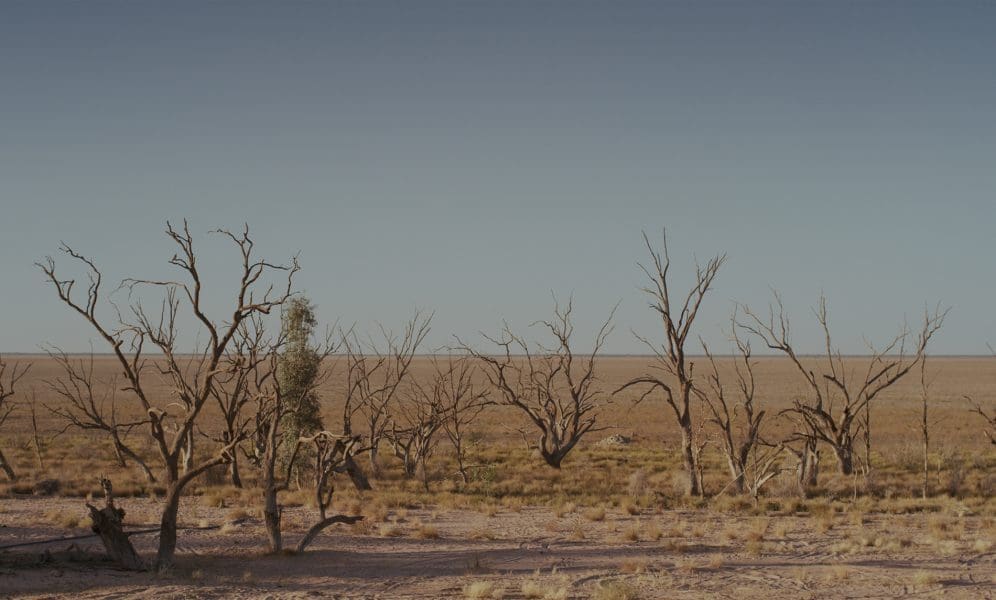
Family Ties
Using the powerful connection between mother and daughter, Generational at Madeline Gordon Gallery in Launceston, explores this intimate relationship with creativity and complexity.






Asking herself about the four edges that form the border of Australian landscape painter WC Piguenit’s 1899 work Flood in the Darling, 1890, Gabriella Hirst wondered about leakage. After all, the painting is full of water—and, looking at it, we might wonder what is beyond the frame. Rivers can never be contained or shown in their entirety, especially in a painting.
For the aptly titled Darling, Darling at the Australian Centre for the Moving Image (ACMI), created as part of the Ian Potter Moving Image Commission, Hirst is presenting two back-to-back projections, playing simultaneously. While the distinct sounds from each film will leak into its companion film’s space, visitors will not be able to see both pieces at once.
One film is a series of landscape-based images shot around the Darling River (“Or is it the Barka-Darling or just the Barka?” asks Hirst, using its Indigenous name). The other footage, more documentary in style, examines conservation work done on the surface of the Piguenit painting at its home at the Art Gallery of New South Wales.
Hirst’s research for Darling, Darling has been underway since mid-2015 and the generously funded ACMI commission ($100,000) was a chance to focus her vision and bring on collaborators who have expertise in various aspects of film production. There are many ideas intertwined into this complex, provocative work: what is containment; what does the art of conserving paintings convey to us; and what did it mean for Piguenit to go out into the unceded landscape, in the early days of colonisation, to ‘capture’ it?
“Like so many art projects [in the wake of Covid-19] it has been extended so far beyond its original conception,” Hirst says. “My ideas have developed so far from where they started.”
Darling, Darling
Gabriella Hirst
Australian Centre for the Moving Image (ACMI)
11 February—29 April
This article was originally published in the March/April 2021 print edition of Art Guide Australia.